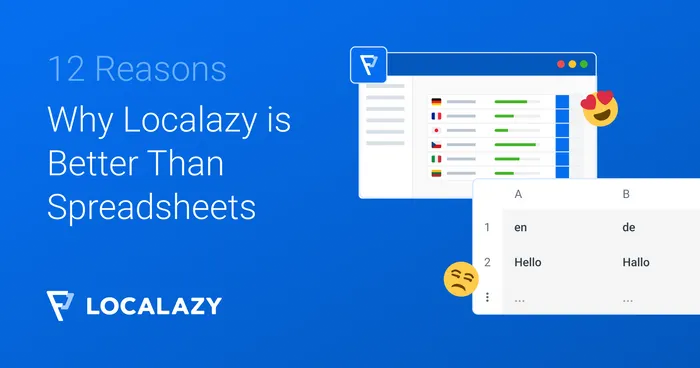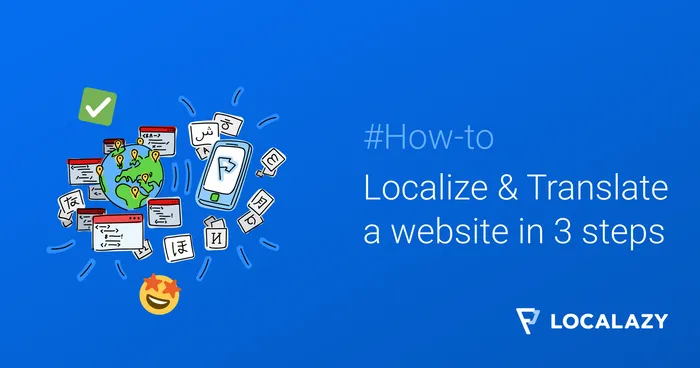Last year was nothing short of a tech thriller, with LLMs and MT making waves in the industry, and a growing focus on user experiences in localization. For better or for worse, these dramatic shifts are reshaping how we think about digital product localization. It’s exciting but, let's be honest, a bit daunting too. Everyone in the industry, from the most seasoned pros to the newcomers, is on their toes, wondering what's next.
🔮 What's in store for us in 2024? 🔗
The next year is shaping up to be an exciting one for our industry, with all signs pointing towards a significant growth spurt. 📈 Stats refer to somewhere between a 7.51% to 10.6% CAGR until 2032. A surge in demand for quality localized apps and software, together with the need to provide seamless user experiences, fuel the growth of the market. It’s simple, really: businesses are more eager than ever to cross borders and connect with new audiences.
With such a fast and dramatic transformation, it’s becoming hard to navigate the changing landscape. To help you get an idea of where things are going, I’ve prepared six trends you should keep your eye on this upcoming year.
1. A stronger machine + human synergy 🦾 🔗
Companies are starting to grasp the importance of this partnership between human intelligence and AI technology. This is especially true when it comes to creating top-notch multilingual user experience (UX) content. Language professionals are discovering new ways to work alongside AI, leveraging its generative features, data analysis capabilities, and speed to enhance creative and cultural insights.
This collaboration promises to streamline workflows and help localization teams produce better results faster. For the teams who learn how to make smart use of this tech, it becomes a game-changer in content production. Mind you, it’s not replacing human talent as some initially feared. Instead, it acts as a powerful tool that elevates and accelerates human skills so that they can focus on the more intricate aspects of language, culture, and localization.

2. Localizers becoming part of the team 🤝 🔗
More and more companies are keen on setting up their own teams of localization professionals, at least for their primary markets. By building an in-house team, companies are tightening the reins on their localization processes, getting full control over the workflow, the skillset of each team member, and the collaboration between everyone involved. 🏇 Having each team member fully immersed in the company culture and goals helps customize the results based on the company’s needs so that every piece of localized content aligns perfectly with the brand's voice and the specific nuances of each market. This way, organizations can keep a consistent and authentic brand voice across different languages and regions, which is crucial in today's global market.
But that’s not all: having these specialists on board as part of the team means localization becomes an integral part of the product development cycle. Localization managers and linguists work hand in hand with product developers, marketers, and designers. This approach not only streamlines communication and decision-making but also speeds up the process, allowing companies to react and adapt quickly to new market demands or cultural nuances. This means products hit the market faster and are better received by their audiences.
3. Improvements in MT output for UX 🤖 🔗
Thanks to increasingly sophisticated algorithms and neural networks, MT is becoming more adept at understanding and replicating the nuances of human language. The more companies use them, the better they get, as a lot of the content translated by humans gets reused as training materials for the engine. This ongoing learning process means that the quality of MT-generated content is reaching new heights - even when it comes to short-form UX content.
Machine-translated generated content is reaching new heights as more companies test these algorithms and neural networks for translations
As MT technologies become more proficient in handling this type of content, businesses can further streamline localization processes. They can shift the focus of their human workforce to critical aspects of the experience, such as cultural compatibility and design placement. 🔍 This means faster turnaround times, and sometimes even reduced costs. And it opens up new possibilities for creating more engaging, culturally-relevant experiences that would reach bigger audiences worldwide.
4. A shift from translation to QA 🕵️♀️ 🔗
With MT engines handling the initial heavy lifting of creating those draft translations, human translators can channel their skills toward refining and polishing these outputs. This shift means that translators are spending less time on the basic groundwork of translation and more on ensuring that the final content is contextually and culturally appropriate. The focus is on elevating the overall user experience, making sure that every translated piece doesn't just read right, but also feels right to the end-user. This change is a big deal.
Translators are gradually becoming quality guardians, with their expertise now applied in a more targeted way. They review and adjust MT suggestions, ideally in context, to ensure that every headline, button, and paragraph hits their mark. This approach, naturally, will enrich and enhance the experience for international users. This shift underscores the critical role of human touch in the localization process, even with technology so heavily used.

5. Two very different l10n approaches 🧠 🔗
There have always been two groups in app and software localization. But recently, we're seeing these two camps becoming more and more distinct in approaches.
- ⚙️ On one side, some products are being localized purely for functional understanding. It's a no-frills, straightforward strategy, where the investment is more about covering basic communication rather than delving into the nuances of user experience. This method is particularly prevalent among products where the main claim to fame isn’t the experience but something else, like an innovative solution or a significant saving in cost.
- 🏄♀️ On the other end of the spectrum, we're witnessing a growing emphasis on localization that goes beyond just being understood. Companies in this group are investing in creating a great experience for international users. They recognize that an authentic, culturally-tuned user experience can be a major differentiator for them in global markets because their unique value proposition is impacted by the quality of the experience. This trend is especially noticeable in industries where user engagement and brand loyalty are key, such as in tech, gaming, or lifestyle products.
Two localization philosophies coexist in the language industry: one that uses translation to cover basic communication needs, and one that aims for culturally-tuned user experiences that resonate globally
This divergence in localization strategies will become more pronounced, and accordingly, we’ll see two different ways to do localization: one heavily focused on quantitative metrics such as time and cost, and the other leaning towards qualitative metrics such as satisfaction and engagement.
6. Optimized processes and tech stacks ⚡️ 🔗
There's a noticeable shift in how companies are approaching their localization strategies, with a keen focus on refining processes and finding the right software. Companies are actively searching for and investing in cutting-edge tools and software that can automate the mundane parts of the localization process, focusing on efficiency, speed, and scalability. They're turning to solutions that can seamlessly sync content across platforms and languages, reducing the time-to-market and freeing up their teams to focus on the more creative aspects of localization.
This newfound emphasis on process optimization and tech integration reflects an understanding of the immense value of a streamlined localization workflow. A well-oiled machine that can handle the complexities of multiple languages and markets with ease. 🪄 The adoption of these innovative tools and software is becoming a necessity for businesses looking to stay competitive in a global marketplace. As we move through 2024, this focus on process and tech stack refinement is set to become a defining characteristic of successful, globally-minded companies.

📌 Conclusion 🔗
The twin stars that will guide us through this year are communication and optimization. How effectively we communicate and how willing we are - and our teams, too - to learn and adapt. For businesses venturing into new markets or looking to solidify their presence, the ability to stay flexible and quickly come together to learn will be the key to success. Having a steadfast partner like Localazy can make all the difference here.




